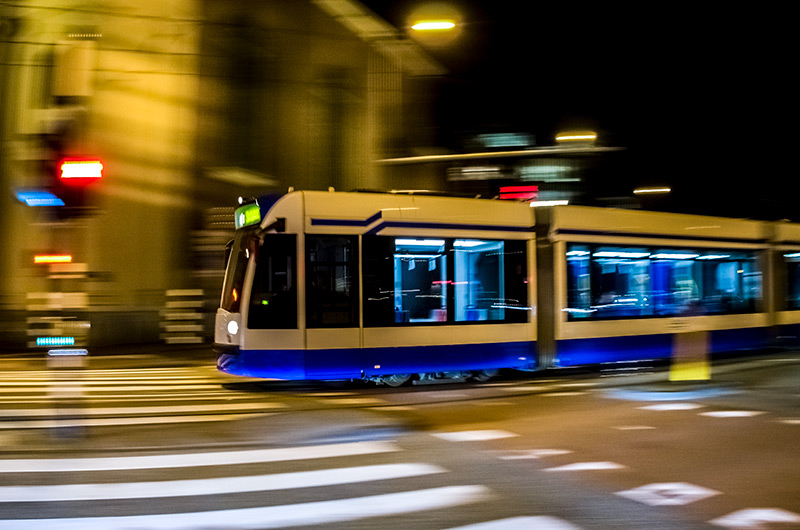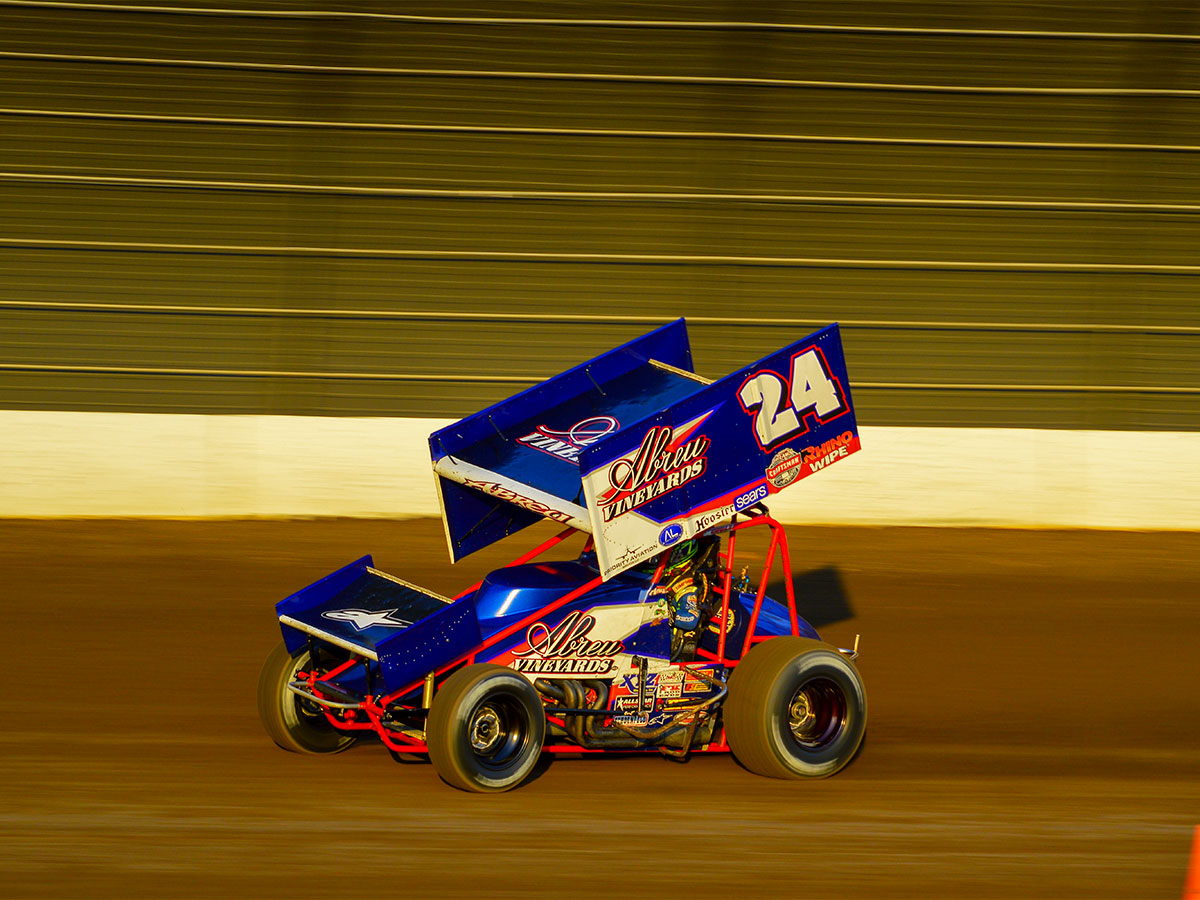Panning and tracking objects can be tricky in the beginning. It’s usually pretty tough and the results are lousy the first few times a budding or amateur photo enthusiast tries it out. It takes a lot of practice to get a nice shot, but once you get the hang of it, it’s as easy as pie. If you’re not familiar with what I’m referring to, please take a look at this photograph.

Do you see how the train is sharp, but the foreground and background is a blur? It looks like there’s movement in the photo, doesn’t it? That’s the technique right there. Trying to take a picture of a moving object and to keep that object as sharp as possible, while blurring the background. The goal is to give the viewer an experience. To allow them to know what’s going on. To see it happening through your photo.
How to Track Objects with Good Results in Photography
Standing in a still position and following an object with your camera is referred to as panning. The trick is to keep your camera as steady as possible while following the subject and to continuously take photos of it as it’s passing by. If you have your shutter speed set to something quite fast, such as 1/500 of a second, you may not get the background blur you’re looking for. It’ll depend on how fast you’re tracking the subject. conversely, if your shutter speed is too slow, such as 1/4 of a second, you might not be able to keep the subject clear and in focus. There’s a sweet spot here and down below, I’ll offer a few tips for when it comes to this type of photographic technique.
Tips For Panning Your Camera
- When attempting this type of photo technique, use Shutter Priority mode on your camera.
- For slow moving objects, such as cars on a city street or someone riding a bicycle, you can use a slower shutter speed, such as 1/25 of a second.
- For faster moving subjects, such as a race car or a motorcycle on a highway, use a faster shutter speed, such as 1/200 of a second.
- To become proficient with this technique, try learning with slower moving objects and faster shutter speeds. That’s the easiest way to find success at the beginning.
- If you’re in a fixed position, try using a tripod to keep your camera steady while panning. It’s not necessary, but it can help.
- Continuously take photos as you’re following your subject.
- Follow your subject from beginning to end. Don’t try to jump in somewhere in the middle. A smooth arc will yield the best results.
- Use an image stabilized lens when panning. That will reduce much of the camera shake.
- Take tons of photos and practice your heart out. Digital photos are free once you buy the camera, so use the camera to take as many photos as you can.
As if these tips weren’t enough, take a look at a different perspective below.
How to Capture Movement with Panning While Photographing
Panning a camera is like serving a tennis ball. It’s all about the follow through. I’ve played a lot of tennis in my day and I can tell you that the follow through is where it’s at.
Have you ever seen one of those photos that looks like something is moving fast in it? Or perhaps moving slow? Moving all the same. There’s movement. While the subject of the image is clear, the background is blurred in one direction or another. Have you ever wondered how the photographer took that photo? For the longest time, I did wonder about that and today, I’m happy to tell you that I know how it’s done. Of course, I plan on telling you all about it. But first though, take a look at an example photo to see what I’m referring to. This is a photo of a sprint car racing around a dirt track.

As you can see, the subject is clear while the background is blurred. Let’s go over how exactly this technique is accomplished.
What’s This Panning All About?
When someone “pans” a camera, they’re moving that camera to the left or to the right. It’s like they’re drawing a gigantic sideways arc with it. Most of the time, they’re attempting to track a moving subject, hence the panning.
Now here’s the thing. If someone is tracking a moving subject and they have their camera set to use a very fast shutter speed, they may not capture any movement in the photo at all. The feeling won’t be there. It’ll be like the subject isn’t moving and the photographer isn’t panning. Because photographers oftentimes want to evoke some sort of an emotion, they’ll slow the shutter speed of their camera down a bit and then pan. They’ll track the moving subject and at the right time, they’ll snap the photo. Because the panning is combined with the slower shutter speed, they’ll end up with a subject that appears still and a background that appears to be moving. It’s a rather interesting effect. When it comes to this type of effect, it’s more about what implied, as opposed to what actually exists.
The Difference Between Panning & Trails
When a photographer pans a subject, he or she is moving the camera in tandem with the subject. As I said above, this creates a still subject and a moving background. Conversely, when a photographer keeps the camera still and simply slows down the shutter speed when something is moving by them or in front of them, everything in the scene will remain still, but the subject will appear to be moving. These two things are quite the opposite. The reason I mention this is because I didn’t want anyone to get confused by these two different types of “movement” shots.
The Rules For Panning & Getting Great Photographs
- Understand that this isn’t the easiest of techniques. You’ll need to practice it quite a bit to, first, get used to what’s happening and second, to become proficient at it.
- The slower a subject is moving, the easier it is to take a nice photo.
- Fast moving subjects will make you want to throw your camera in the river. Trust me, start with slow, slow, slow.
- While panning, if you’re shooting free-hand, you’ll need to keep your hands as steady as possible and you’ll need to keep your pan as horizontal as possible. Trails behind the subject will likely appear in the photo and the goal is to have those trails as straight as possible. The same goes for any blur that’s introduced into the photo.
- Panning is all about shutter speed and camera movement. The faster your shutter speed (1/200 second), the crisper the subject will be. Remember though, with a fast shutter speed like that, there won’t be as much blur and drama in the background. The slower the shutter speed (1/4 second), the more drama there will be in the background, but the subject will be less crisp. Also, with a slower shutter speed, there’s more of a chance that the camera will pick up on an unsteady hand. The trails and blur may have an arc to them.
- Panning at night is different than panning during the day. All the rules for night photography apply for panning at night. You’ll need to take ISO, aperture size and shutter speed into account.
- For fast moving subjects, such as motorcycles riding around a race track, you’ll need a faster shutter speed (1/200 second). For slower moving subjects, such as a car driving by on the road or a bicyclist riding by, you can go with a slower shutter speed (1/25 to 1/8).
- When learning how to pan your camera, I suggest you try to take photos of slow moving subjects while using relatively fast shutter speeds. You may want to take a photo of someone slowly riding a bicycle in a park with shutter speeds that range between 1/100 and 1/200 of a second. Once you get the hang of things, you can incrementally slow down the shutter speed and move to faster subjects.
- When panning, use a VR (Vibration Reduction) or an IS (Image Stabilization) lens on your camera. These types of lenses remove a lot of camera shake, which there will be because of all that movement.
- Use Shutter Priority when panning. You control the shutter speed and the movement of the camera. Let the camera do all the other thinking. There will be enough on your plate to deal with.
- When panning, keep tracking with the lens pointed at the subject and continue to take multiple shots. Keep the camera smooth and push the button without pausing or stopping the movement of the camera at all.
- Practice, practice, practice. You can’t read about this photography technique online, go outside and expect to take perfect shots. This type of style is going to take practice to become proficient at. With enough practice and wasted photos, I promise you that you’ll eventually end up with something you’re proud to show others.
I hope I clearly explained some tricks and tips for how to go about panning your camera to capture moving objects. If you have any questions regarding this post, please let me know down below. Thanks for reading!

Leave a Reply